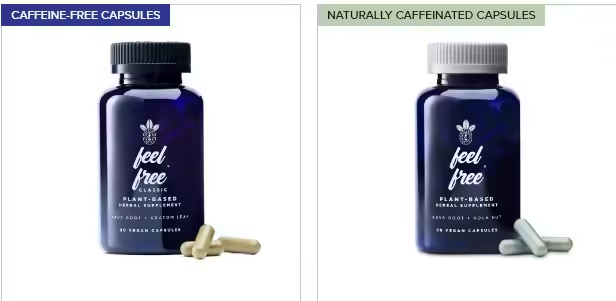This guide will explore the possibility to kill tooth pain nerve in 3 seconds permanently, diving into the methods, myths, and realities of such a claim. We will also cover some of the most effective strategies for dealing with tooth pain, providing you with practical solutions that can bring you the relief you need. Tooth pain is one of the most excruciating and disruptive experiences that anyone can endure. Whether it’s a sharp, sudden jolt or a dull, persistent ache, the discomfort can significantly affect your day-to-day life. For those who suffer from chronic tooth pain, finding a solution that works quickly and effectively is paramount.
When it comes to killing tooth pain nerve in 3 seconds permanently, understanding the limitations of home remedies is crucial. While temporary relief methods like clove oil, saltwater rinses, and ice packs can soothe the symptoms, they do not kill tooth pain nerve permanently. The only reliable way to kill tooth pain nerve permanently is through professional dental procedures such as a root canal. Attempting to kill tooth pain nerve in 3 seconds permanently with home remedies could lead to further complications and prolonged discomfort.
For those seeking to kill tooth pain nerve in 3 seconds permanently, it’s essential to consult with a dentist who can provide an accurate diagnosis and recommend the appropriate treatment. Procedures like root canals are designed to kill the tooth pain nerve permanently by removing the infected or damaged nerve tissue, thus eliminating the source of pain. Without professional intervention, the goal to kill tooth pain nerve in 3 seconds permanently remains out of reach, and temporary measures can only offer brief relief.
Understanding Tooth Pain and Its Causes
Tooth pain can arise from various issues, each requiring a different approach for treatment. Understanding the root cause of your tooth pain is essential before attempting to kill the tooth pain nerve in 3 seconds permanently.
Common Causes of Tooth Pain
- Tooth Decay: The most common cause of tooth pain is tooth decay. When cavities penetrate through the enamel and into the dentin or pulp, it can lead to significant discomfort.
- Gum Disease: Infections and inflammation of the gums can cause pain in the teeth and surrounding areas. This can also lead to more serious conditions if left untreated.
- Tooth Abscess: An abscessed tooth, which is a pocket of pus caused by a bacterial infection, can lead to severe, throbbing pain that can radiate to the jawbone.
- Cracked or Damaged Teeth: Cracks in the teeth can expose the nerves, causing pain, especially when chewing or when the tooth is exposed to hot or cold temperatures.
- Exposed Tooth Roots: Receding gums can expose the roots of the teeth, leading to sensitivity and pain.
- Dental Procedures: Pain can sometimes occur after a dental procedure such as a filling, crown, or root canal. This pain is usually temporary but can be intense.
The Role of the Tooth Nerve in Pain
The tooth nerve, also known as the pulp, is the innermost part of the tooth, containing nerves and blood vessels. When the pulp is exposed or infected, it can result in significant pain. The idea of killing the tooth pain nerve in 3 seconds permanently involves targeting this nerve to eliminate the source of pain.
Can You Really Kill Tooth Pain Nerve in 3 Seconds Permanently?
The notion of killing a tooth pain nerve in 3 seconds permanently is an attractive one, especially for those suffering from intense pain. However, it’s essential to approach this claim with a critical eye. Here, we will explore the feasibility of this idea and the methods that are commonly discussed.
Myth vs. Reality
There are many myths surrounding the idea of instantly killing a tooth pain nerve. While some home remedies and treatments can provide rapid pain relief, the concept of permanently killing a nerve in just 3 seconds is largely unrealistic without professional dental intervention.
- Home Remedies: Various home remedies, such as applying clove oil or using ice packs, can provide temporary relief from tooth pain. However, these methods do not kill the nerve but instead numb it or reduce inflammation.
- Over-the-Counter Products: Pain relievers, oral gels, and numbing agents can provide quick relief, but they are not permanent solutions. These products mask the pain without addressing the underlying cause.
- Professional Treatments: The only way to permanently eliminate the nerve and thereby kill tooth pain is through professional dental treatments like a root canal. A root canal involves removing the damaged or infected pulp and sealing the tooth to prevent further pain.
The 3-Second Solution: Is It Possible?
While there are techniques and remedies that can provide rapid pain relief, the idea of a 3-second permanent fix is a stretch. Here’s why:
- Time Required for Nerve Death: For a nerve to be permanently “killed,” it would need to be removed or sufficiently damaged to the point that it can no longer transmit pain signals. This process typically takes longer than 3 seconds, even in a clinical setting.
- Pain Relief vs. Nerve Elimination: Many methods that claim to kill the tooth pain nerve quickly are actually providing rapid pain relief rather than permanent nerve elimination.
- Professional Intervention: A dentist can perform procedures that effectively kill the tooth nerve, but these procedures, such as a root canal, take time and careful execution.
Effective Methods to Kill Tooth Pain Nerve Permanently
Although the idea of killing a tooth pain nerve in 3 seconds permanently may be unrealistic, there are effective methods to achieve permanent relief. Below, we explore these methods, including both professional dental procedures and at-home strategies that can help manage pain until professional treatment is available.
Root Canal Treatment
The most effective and commonly performed procedure to kill a tooth pain nerve permanently is a root canal.
What is a Root Canal?
A root canal is a dental procedure that involves removing the infected or damaged pulp (nerve) from inside the tooth. The space is then cleaned, disinfected, and filled with a special material to prevent further infection. Finally, the tooth is sealed, often with a crown, to restore its function and appearance.
The Process of a Root Canal
- Anesthesia: The dentist will begin by numbing the area around the affected tooth to ensure the procedure is pain-free.
- Pulp Removal: An opening is made in the top of the tooth, and special tools are used to remove the damaged or infected pulp.
- Cleaning and Disinfection: The empty pulp chamber and root canals are thoroughly cleaned and disinfected to remove any remaining bacteria.
- Filling: The cleaned space is filled with a biocompatible material called gutta-percha.
- Sealing: The tooth is sealed with a filling or crown to protect it from further damage.
Tooth Extraction
In cases where the tooth is too damaged to be saved, a tooth extraction may be necessary.
When is Extraction Necessary?
- Severe Decay: If the tooth is decayed beyond repair, it may be better to remove it to prevent further pain and infection.
- Cracked or Broken Teeth: Teeth that are cracked or broken beyond repair might need to be extracted.
- Extensive Infection: Infections that have spread to the surrounding bone or tissue may require tooth extraction.
The Extraction Process
- Anesthesia: Local anesthesia is administered to numb the area around the tooth.
- Tooth Removal: The dentist or oral surgeon uses specialized tools to loosen the tooth and remove it from its socket.
- Aftercare: Post-extraction care involves managing pain, preventing infection, and promoting healing. This typically includes the use of pain relievers, cold compresses, and following specific instructions from the dentist.
Home Remedies for Temporary Pain Relief
While waiting for a professional dental appointment, some home remedies can provide temporary relief from tooth pain. However, it’s important to note that these are not permanent solutions.
Clove Oil
Clove oil is known for its analgesic properties and can be used to temporarily numb tooth pain.
How to Use: Apply a small amount of clove oil to a cotton ball and place it on the affected tooth for a few minutes.
Saltwater Rinse
A saltwater rinse can help reduce inflammation and kill bacteria, providing temporary relief.
How to Use: Dissolve a teaspoon of salt in a glass of warm water and rinse your mouth thoroughly for 30 seconds before spitting it out.
Ice Pack
Applying an ice pack to the cheek near the affected tooth can help reduce swelling and numb the pain.
How to Use: Wrap an ice pack in a cloth and hold it against the outside of your cheek for 15-20 minutes.
Preventing Tooth Pain in the Future
Prevention is always better than cure. By taking care of your teeth and gums, you can reduce the likelihood of experiencing tooth pain in the future.
Regular Dental Check-Ups
Regular visits to the dentist for check-ups and cleanings can help detect problems early and prevent tooth pain.
Recommendation: Schedule dental check-ups at least twice a year.
Good Oral Hygiene
Maintaining good oral hygiene is key to preventing tooth pain.
- Brushing: Brush your teeth at least twice a day with fluoride toothpaste.
- Flossing: Floss daily to remove plaque and food particles from between your teeth.
- Mouthwash: Use an antiseptic mouthwash to kill bacteria and freshen your breath.
Healthy Diet
A diet high in sugars and acids can contribute to tooth decay and pain.
Tips:
- Limit sugary snacks and drinks.
- Eat plenty of fruits, vegetables, and dairy products.
- Drink plenty of water to help wash away food particles and bacteria.
Avoiding Tooth Injuries
Protect your teeth from injury by wearing a mouthguard during sports and avoiding habits like chewing on ice or using your teeth to open packages.
Myths and Misconceptions About Tooth Pain
There are many myths surrounding tooth pain and its treatment. Let’s debunk some of the most common misconceptions.
Myth 1: Tooth Pain Will Go Away on Its Own
Many people believe that tooth pain will resolve on its own if left untreated. However, tooth pain is often a sign of a more serious underlying issue that needs professional attention.
Myth 2: Applying Aspirin Directly to the Tooth Will Relieve Pain
Some people believe that placing an aspirin on the tooth will relieve pain. However, this can cause burns to the gum tissue and does not address the cause of the pain.
Myth 3: Pulling a Tooth is the Best Solution for Pain
While extraction may be necessary in some cases, it is not always the best or only solution for tooth pain. Preserving the natural tooth through treatments like root canals or fillings is often preferable, as it helps maintain oral function and aesthetics.





1 COMMENTS
Comments are closed.